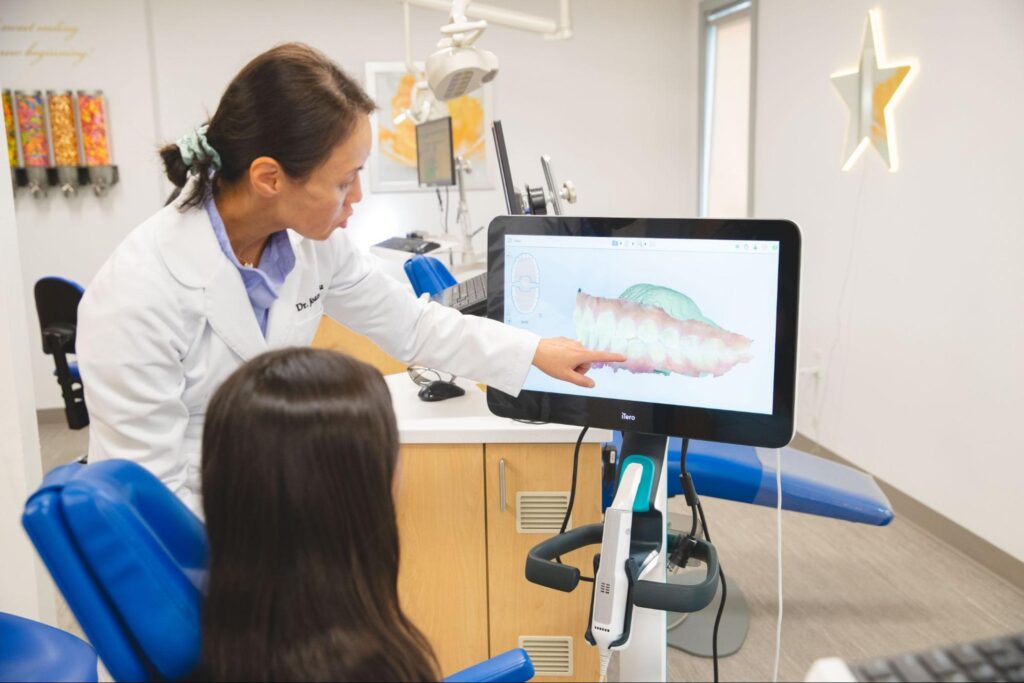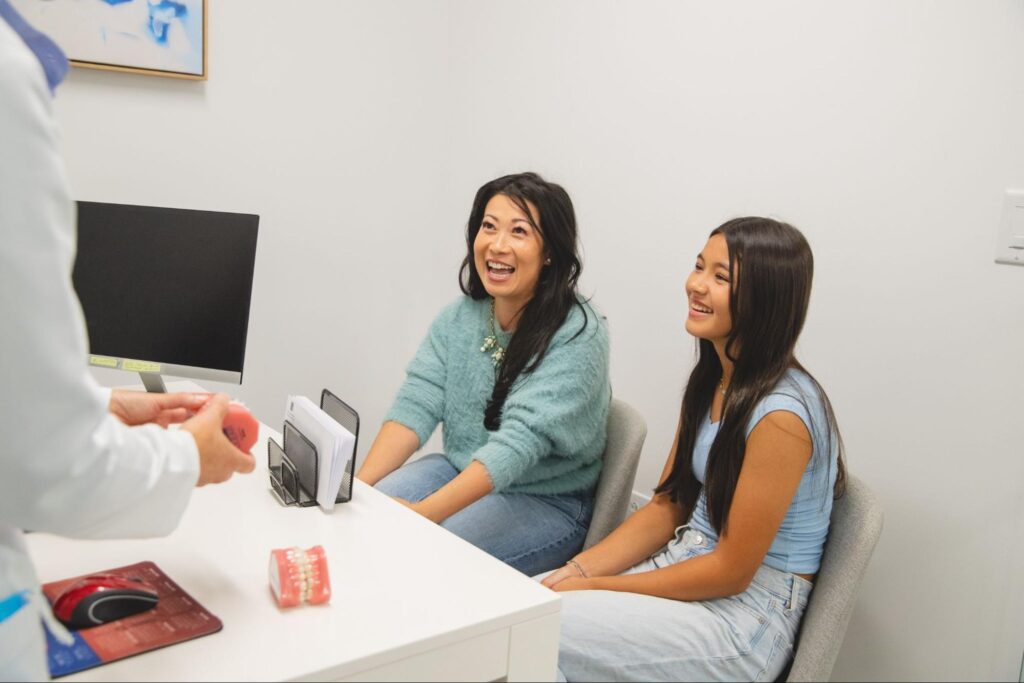You’ve probably heard that early orthodontic treatment can make a big difference, but knowing when—or if—your child actually needs it is another story. Maybe their teeth look a little crowded, or they still have some baby teeth hanging around, and you’re wondering if that’s normal. Or maybe their bite seems off, but you’re not sure if it’s something they’ll outgrow or if it needs intervention.
Invisalign First is designed for kids who are still growing, offering a way to guide their teeth into better positions before bigger orthodontic issues develop. But is it really necessary? And more importantly, is it the right fit for your child? Dr. Yu can help you determine if this is the best course of action for your child during a consultation in our Portland or Windham office at Adult & Pediatric Orthodontics.
What Is Invisalign First?
Invisalign First is designed for kids between 6 and 10 years old who still have a mix of baby and adult teeth. It’s part of Phase I orthodontic treatment, meaning it helps guide jaw growth, create space for incoming teeth, and prevent bigger alignment issues later on.
Instead of brackets and wires, Invisalign First uses clear, removable aligners custom-made for your child’s mouth. Every one to two weeks, they switch to a new set, gradually shifting their teeth into better positions.
Why Parents Consider Invisalign First:
- More comfortable than braces – No metal, no wires, no irritation.
- Discreet – Clear aligners mean no major change to their smile during treatment.
- Removable for meals and brushing – No food restrictions, no tricky flossing around brackets.
- Can prevent bigger issues later – Addresses crowding, spacing, and bite concerns early.
Getting ahead of alignment problems now can make a big difference in the long run, both for your child’s bite and for avoiding more intensive treatment later.
Signs Your Child Might Benefit from Invisalign First
Not every child needs early orthodontic treatment, but certain signs can hint that Invisalign First might be a good idea. If you’re noticing any of the following, it’s worth getting a professional opinion:
- Teeth crowding or overlapping – If baby teeth are packed in tight, there may not be enough space for adult teeth to come in correctly.
- Gaps that seem too wide – Some spacing is normal, but large gaps might need a little guidance to ensure everything aligns properly.
- Bite issues – Overbites, underbites, and crossbites can lead to bigger problems with chewing, speaking, and jaw development.
- Struggles with chewing or biting – If eating certain foods seems awkward or uncomfortable, their teeth might not be aligned the way they should be.
- Thumb-sucking past age 5 – Extended thumb-sucking can shift teeth and impact jaw growth.
If any of these sound familiar, Dr.Yu can take a closer look and help determine whether Invisalign First is the right choice for your child. Catching these issues early can help keep future treatment simpler and more effective.

How Invisalign First Compares to Braces
Choosing between Invisalign First and traditional braces comes down to what works best for your child. Both can effectively correct early orthodontic issues, but they offer very different experiences.
Appearance & Comfort
Metal braces are easy to spot, while Invisalign First is clear and nearly invisible, which is a big plus for kids who might feel self-conscious about wearing braces. The smooth aligners are also more comfortable since there are no brackets or wires to cause irritation.
Eating & Hygiene
Braces come with a list of off-limits foods (popcorn and sticky candy), and brushing around brackets can be tricky. Invisalign First makes mealtime and oral hygiene much easier since kids can simply remove their aligners to eat, brush, and floss as usual.
Effectiveness
Both Invisalign First and braces do the job when it comes to early orthodontic treatment. The biggest difference is that braces stay on 24/7, while Invisalign First only works if your child wears their aligners for 20–22 hours a day. If they’re good at following instructions, Invisalign First can be a great option. If not, traditional braces might be the better route.
What to Expect During Treatment
Getting started with Invisalign First at Adult & Pediatric Orthodontics is simple, and the process is designed to fit easily into your child’s routine. Here’s how it works:
- Consultation & Digital Scans – Dr. Yu will evaluate your child’s teeth and take precise digital scans to map out their treatment plan.
- Getting the Aligners – Your child will receive their first set of custom aligners, along with easy-to-follow instructions on wearing and caring for them.
- Wearing & Switching Aligners – Each set is worn for 1–2 weeks before switching to the next, gradually guiding the teeth into better alignment.
- Regular Check-Ups – Every 6–8 weeks, you’ll come in for a progress check and pick up the next set of aligners.
Most kids complete their Invisalign First treatment in 6 to 18 months, depending on how much correction is needed. Since the aligners are removable, sticking to the routine is key to keeping things on track.

Let’s Find Out if Invisalign First is The Right Choice For Your Child
Early orthodontic treatment isn’t one-size-fits-all, and it’s not always easy to tell when the right time is to start. If you have questions about your child’s teeth or bite, Dr. Yu and the team at Adult & Pediatric Orthodontics in Portland and Windham are here to help. A consultation is the best way to get answers and a plan tailored to your child’s needs.
If you’re considering Invisalign First, reach out to schedule a free consultation and see if it’s the right fit.
